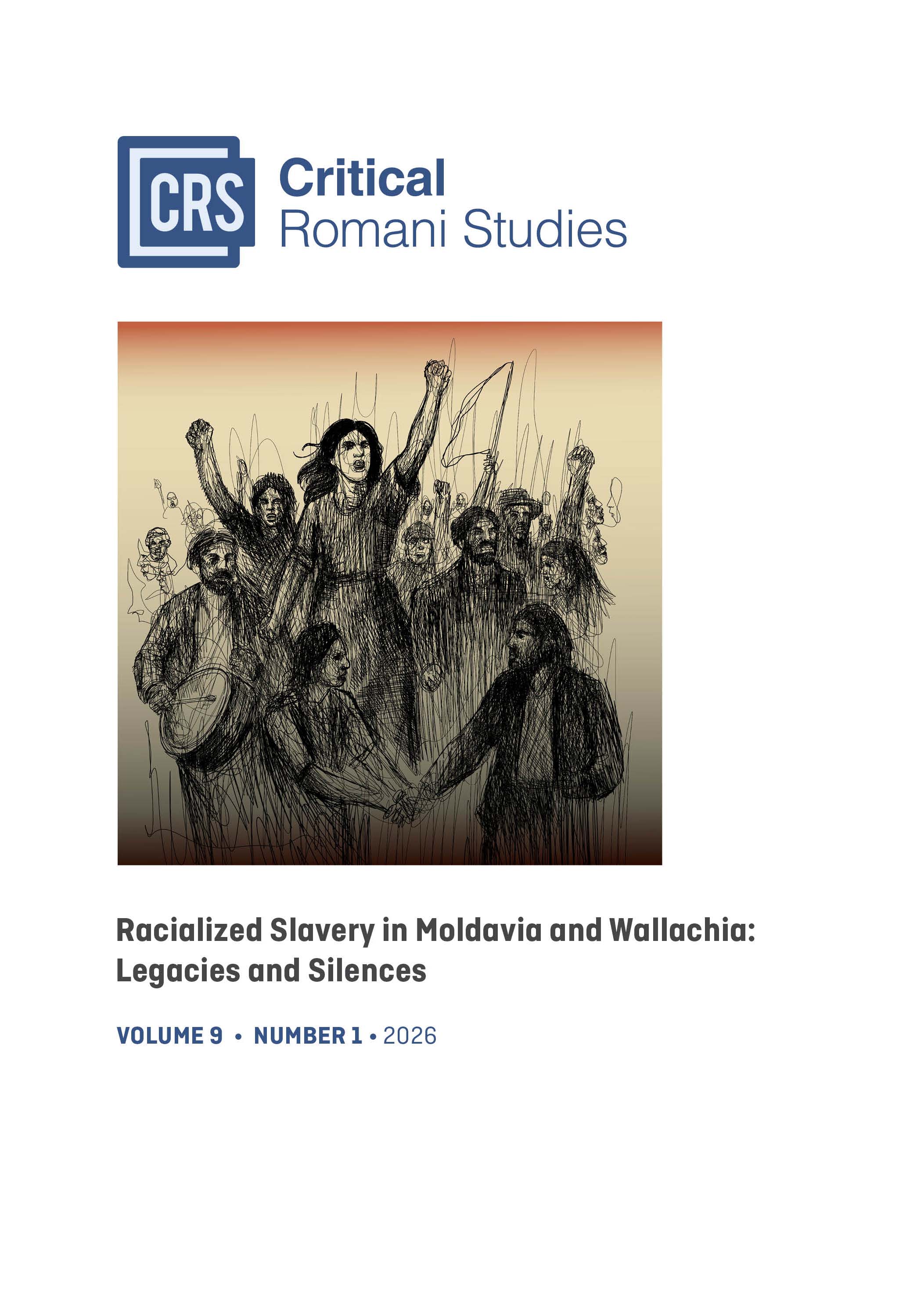Romani Slavery in Romanian Historiography (1837–2023): Terminology, Perspectives, and External Influences
Main Article Content
Article Sidebar
Published
Nov 25, 2025
Petre Petcuț
Abstract
This article traces how Romani slavery has been written into – and more often written out of – Romanian historiography from the earliest scholarly treatment by Mihail Kogălniceanu (1837) to the most recent documentary syntheses (2022). Working with a deliberately selective corpus of key monographs, archival editions, and journal articles, the study maps four historiographical moments:
Foundational (1837–1918) – romantic–philological texts that name the phenomenon yet normalise it through the terms ţigani and robie.
Interwar (1919–1944) – the first large-scale empirical syntheses (Potra, Chelcea) and competing Roma-led associations, documented in police files reproduced by Năstasă and Varga.
State-socialist (1945–1989) – a period of partial amnesia, in which slavery is marginalised within grand national narratives but resurfaces in micro-studies (Cicanci, Grigoraș).
Post-1989 professionalisation – critical re-examinations spearheaded by Achim, Petcuț, and others, accompanied by substantial archival editions that foreground Romani voices.
Across these stages the article analyses (a) terminological slippages that veil slavery (robie vs sclavie, ţigan vs Rom), (b) the impact of foreign observers – from Pierre Lescallopier to Elias Regnault – in framing Romanian slavery as a late European anomaly, and (c) the interplay between nationalist myth-making and external scholarly pressure.
I argue that Romani slavery functioned as a fiscal-productive regime integral to Wallachian and Moldavian state formation; its later erasure reflects both elite discomfort with an “un-European” past and the enduring power of racialised language. Integrating this history into university curricula and public memory is therefore essential for a more honest, inclusive understanding of Romanian modernity.
How to Cite
Petcuț, P. (2025). Romani Slavery in Romanian Historiography (1837–2023): Terminology, Perspectives, and External Influences. Critical Romani Studies, 9(1), 46–69. https://doi.org/10.29098/crs.v9i1.234
Article Details
Keywords
Abolition, Nationalism and collective memory, Romani slavery, Romanian historiography, Wallachia and Moldavia
Section
Articles

This work is licensed under a Creative Commons Attribution-NonCommercial 4.0 International License.
Authors who publish with this journal agree to the following terms:
- Authors retain copyright and grant the journal right of first publication. The work is licensed under a Creative Commons Attribution-NonCommercial License that allows others to share the work with an acknowledgement of the work's authorship and initial publication in this journal.
- Authors are able to enter into separate, additional contractual arrangements for the non-exclusive distribution of the journal's published version of the work (e.g., post it to an institutional repository or publish it in a book), with an acknowledgement of its initial publication in this journal.

